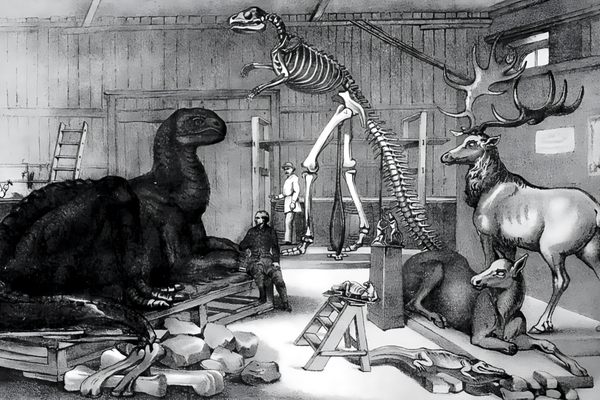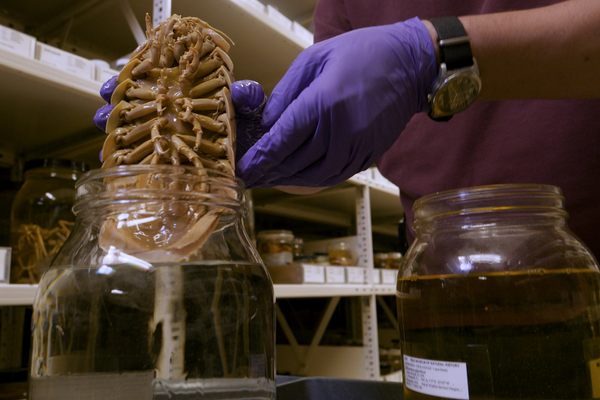The One-Minute Life Stories of Some Fascinating Extinct Species
What looking at animals from the past can tell us about our world now.
“Probably 99.999 percent of all species that ever existed are no longer with us,” says American Museum of Natural History’s Michael Novacek. Extinction, he explains, is just another part of life. Maybe not the best part of life if you’re one of the six animals spotlighted in the museum’s video, “Six Extinctions in Six Minutes.”
Six scientists each give us a one-minute life story of six extinct organisms that you aren’t going to be spotting at your local zoo any time soon. The gone, but never forgotten, species, include trilobites, a 20-foot-long armored fish called the Dunkleosteus, and golden toads, which were discovered only about 40 years before it became extinct.
These species don’t just tell us about the past, they help us understand our world today. One species highlighted in the video, the parasitic Guinea worm, isn’t extinct. Yet. The worm, found in larval form in some African water sources, grows in a person’s stomach, then migrates to emerge from the body through a skin lesion over a period of several painful weeks. As the curator Mark Siddall explains, the worm has caused “millions of people to suffer over thousands of years,” and its eradication is “a moral obligation.”
Researching extinct, or soon-to-be extinct, species helps scientists understand more about how and why those animals aren’t here anymore, and how to combat invasive species.
There’s also another benefit to collecting and preserving departed animals; as one researcher points out, “Right now we’re on the cusp of being able to bring back extinct species.” Get the welcome mat ready for mammoths and sabertooth cats.
Video Wonders are audiovisual offerings that delight, inspire, and entertain. Have you encountered a video we should feature? Email ella@atlasobscura.com.










































Follow us on Twitter to get the latest on the world's hidden wonders.
Like us on Facebook to get the latest on the world's hidden wonders.
Follow us on Twitter Like us on Facebook